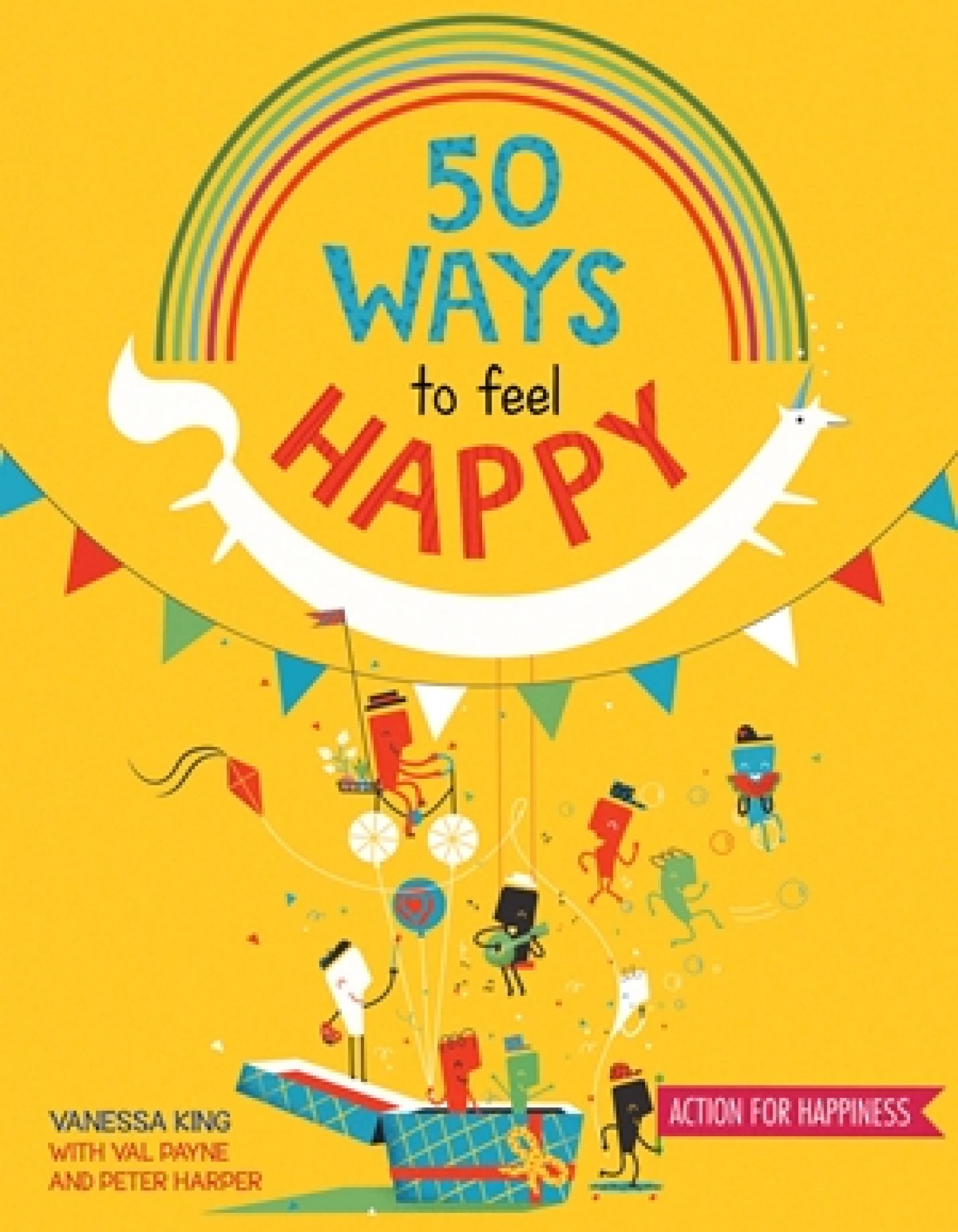50 ways to feel happy is a thoughtfully written book that encourages readers to discover how they can feel happier and more fulfilled. Authored by two psychologists and a teacher, its chapters are based on the ten keys to happier living developed by American organisation ‘The Action for Happiness’.
Each chapter provides children with activities, facts and information on ways to increase their own happiness. They can work through the book in order, or select any activity or page of interest.
One of the strengths of this book is its focus upon enabling children to recognise and understand their feelings and emotions. It encourages reflection: what are the things – people, activities or places – that make you feel happy? It suggests children discuss these with others or record them in a journal.
The book makes a point of acknowledging that it is not possible to feel happy all the time, and that it is okay to feel angry, sad, upset or afraid. It encourages children to be mindful of their feelings in order to deal with challenges and cope with difficulties, and to bounce back when things don’t go to plan.
This book is brimming with information, and as a result, it may be a bit intense for some children. I think it would be ideal for those who are naturally quite reflective and who love reading. And, while some of the activities have great intent, such as encouraging children to find happiness through being kind to others, they are perhaps a bit ambitious, for example: “Can you list 100 different ways of being kind, giving or helping people? Your goal is to do everything on your list!”
However, this book is full of great ideas and in an age dominated by screens, it is refreshing to see lots of activities encouraging children to get outside, be creative and socialise with others. Chapter two has some great suggestions for children on how to connect with others and the importance of being a good listener – it may be helpful for a child who is struggling socially.
Overall, I believe this book is a worthwhile resource to have both in the classroom or home. It encourages children to have a broader, perhaps more holistic and informed view of happiness. By discussing strategies such as healthy eating, mindfulness, setting goals and accepting yourself, it delves deeper into what makes us happy, and in doing so, equips children with some invaluable life skills.
Reviewed by Charmaine Denney, Early Childhood Teacher and mum to two boys

